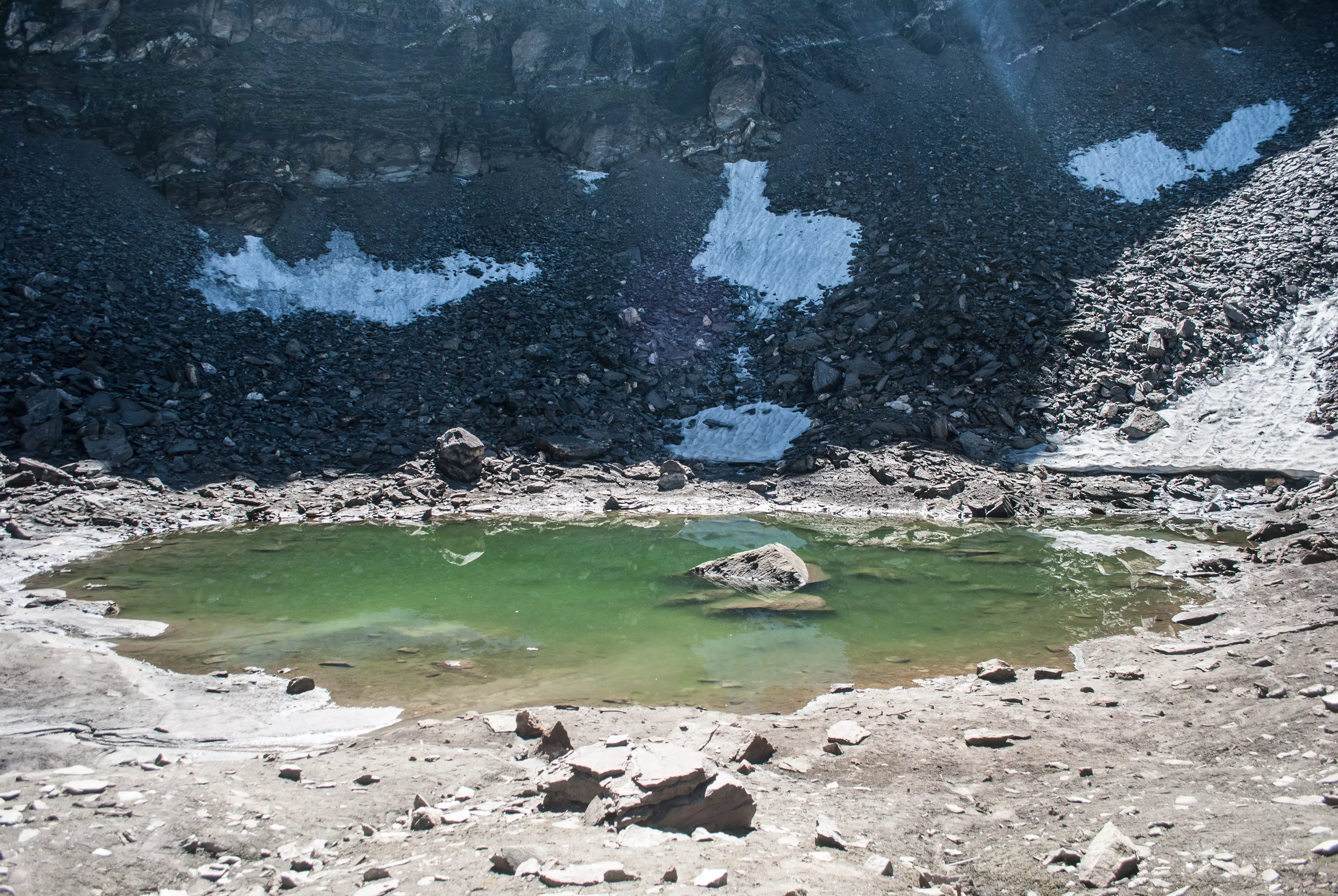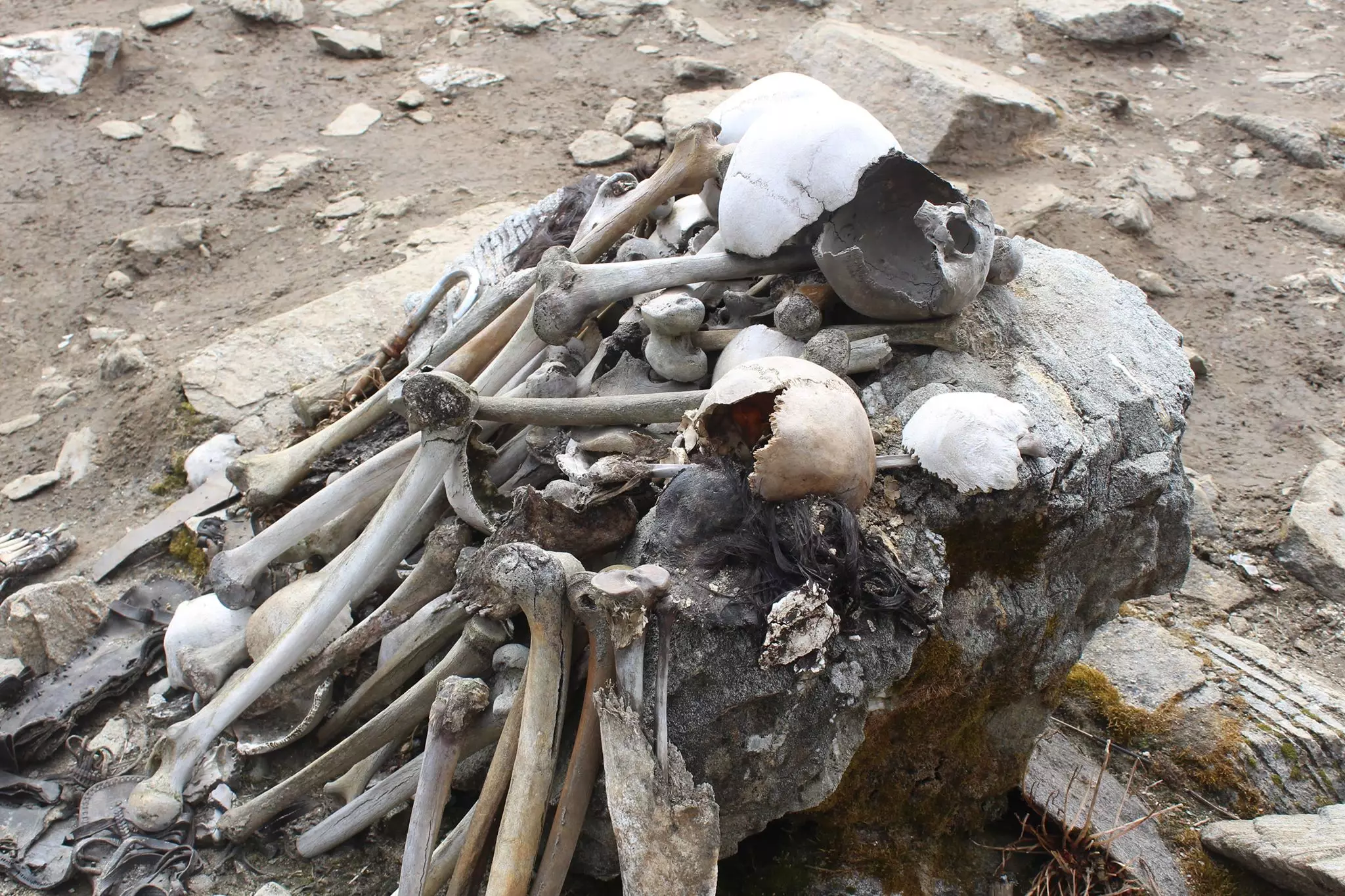
New DNA profiling has revealed that the mystery of the creepy 'Skeleton Lake' is actually weirder than anyone originally realised.
The lake, which sits high in the Himalayas, is home to hundreds of skeletons. Until now, the main theory was that a natural disaster, like a massive storm, had killed a whole town. But no - things just got a lot stranger, as it's been revealed the skeletons in the lake are actually from multiple different places.
Coming from as far away as the Mediterranean, the study, on 38 of the skeletons, showed that they were left in the Indian lake over the span of 1,000 years - taken in groups at separate times.

Evolutionary biologist Éadaoin Harney of Harvard University said: "We were extremely surprised by the genetics of the Roopkund skeletons.
Advert
"The presence of individuals with ancestries typically associated with the eastern Mediterranean suggests that Roopkund Lake was not just a site of local interest, but instead drew visitors from across the globe."
Because many of the skulls had what appeared to be cracks from blunt force of large round objects, one early theory suggested that it could have been down to a freak storm with huge hail stones, which have been seen elsewhere in the world. But that's turned out to not be the case.
In the report, geneticist David Reich of Harvard Medical School, said: "Through the use of biomolecular analyses, such as ancient DNA, stable isotope dietary reconstruction, and radiocarbon dating, we discovered that the history of Roopkund Lake is more complex than we ever anticipated."

To you and I, this means that the scientists could work out when they arrived. They came to the conclusion that the bones that appear to be Indian were put there between the 7th and 10th centuries, possibly in different groups at different times.
Advert
Even more strange though - the other two groups, from the Mediterranean and from Southeast Asia, were dated to between the 17th and 20th centuries CE.

That means that just a few hundred years ago, bodies from Europe and Southeast Asia were taken to the lake.
The remains that haven't been tested could reveal that they could come from even more time frames and locations, but researchers are hopeful that the mystery will one day be solved.
Advert
Niraj Rai, of the Birbal Sahni Institute of Palaeosciences Rai, said: "It is still not clear what brought these individuals to Roopkund Lake or how they died.
"We hope that this study represents the first of many analyses of this mysterious site."
Featured Image Credit: Shutterstock/Wikipedia CommonsTopics: Science, World News, India